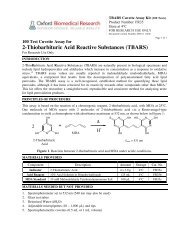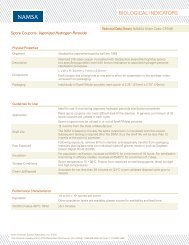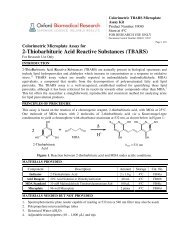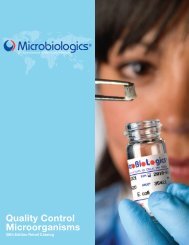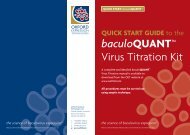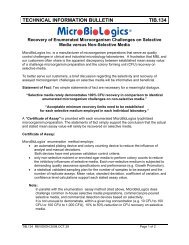flashBAC Manual - Oxford Expression Technologies
flashBAC Manual - Oxford Expression Technologies
flashBAC Manual - Oxford Expression Technologies
You also want an ePaper? Increase the reach of your titles
YUMPU automatically turns print PDFs into web optimized ePapers that Google loves.
The co-transfection mixes can conveniently be prepared in thewells of a 96-well plate (made from polystyrene and with U- orV-shaped well – flat-bottomed plates do not work well).The robot needs to be programmed to add the following to eachof 24 wells of a 96 well plate. Add in the following order, theexact volumes will depend on the actual reagents being used,however, the final volume needs to be 20 µl:1 serum-free medium (8 µl)2 transfection reagent (for example, 2 µl Lipofectin )3 <strong>flashBAC</strong> DNA (5 µl; 100 ng)4 transfer vector DNA (5 µl; 500 ng)The robot should be programmed to mix the reagents bypipetting up and down 3 times.Adding the co-transfection mix to the cell monolayersAfter the cell monolayers have settled, programme the robot toadd the 20 µl co-transfection mix to the appropriate wells of the24 well plate. There is no need to change the medium, simplyadd the co-transfection mix to the medium and mix by pipettingup and down 3 times.Replace the lid and cover with parafilm to prevent evaporation.Incubate at 28°C for 5 days.Harvest the culture medium from each well and store inindividual sterile containers at 4°C in the dark. This is the seedstock of recombinant virus. Use to amplify further stocks ofvirus using the protocols in section 8.2. As a guide use 250 µlseed stock virus to infect 100 ml Sf9 cells.OXFORD EXPRESSION TECHNOLOGIES 38



